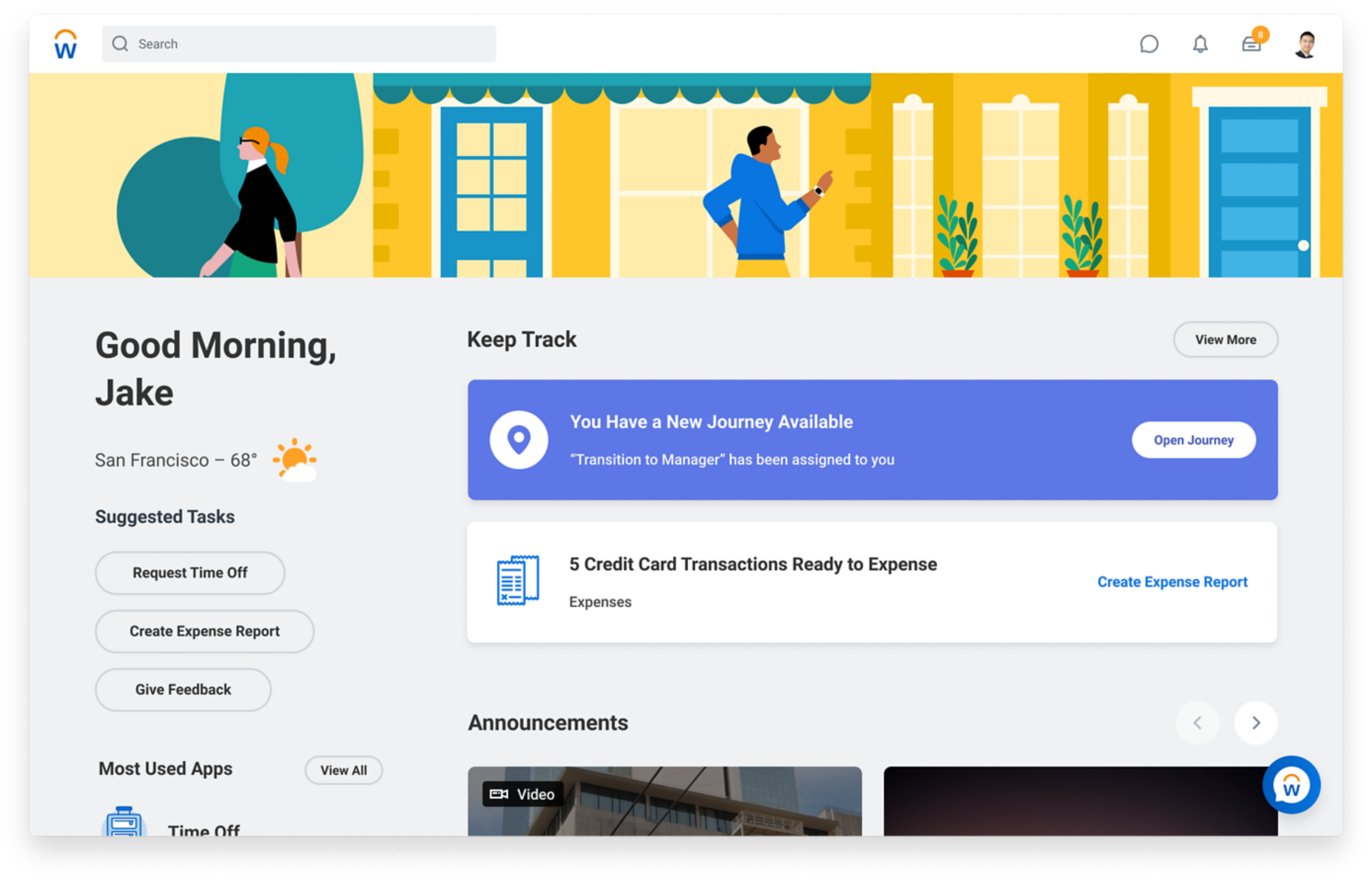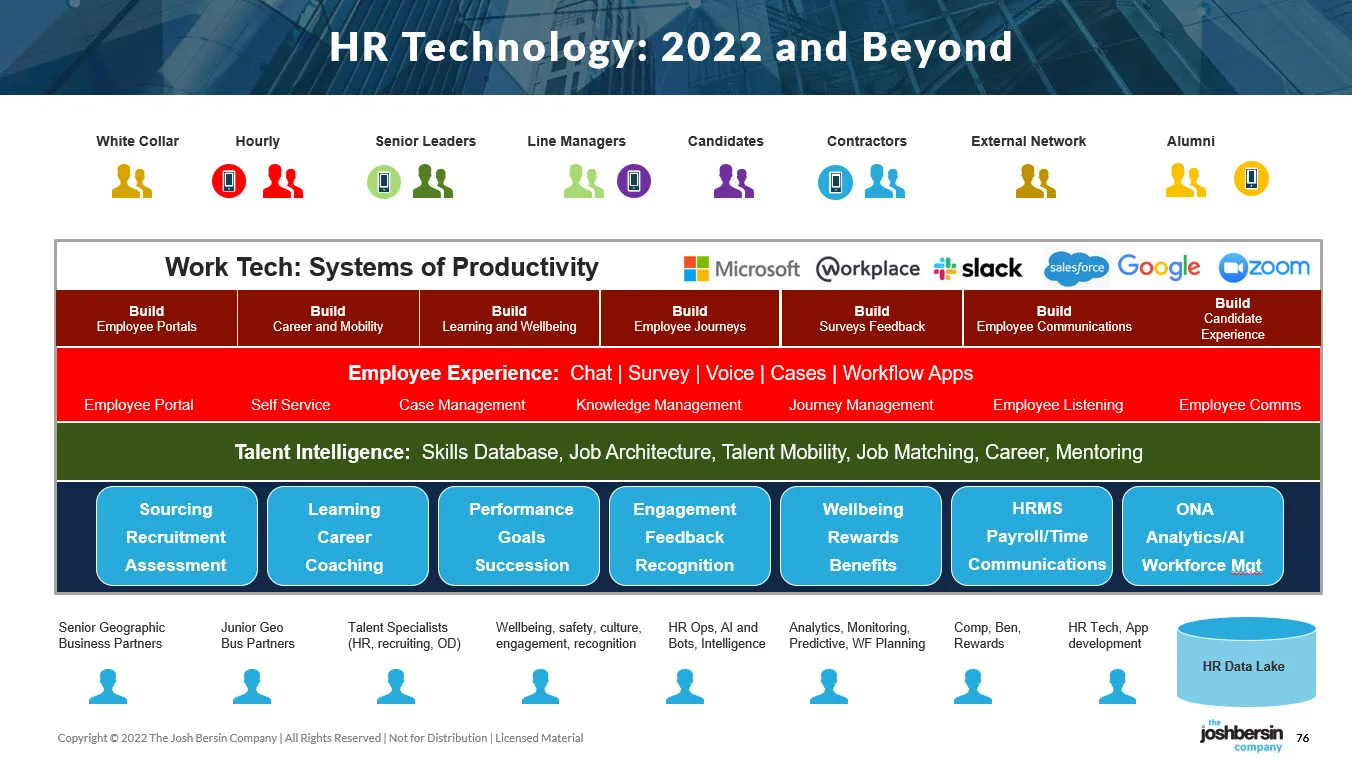Digital HR Strategy: 6 Steps to Success

“Harness the power of digital and get your technology working hard for you to deliver exceptional outcomes for your people, business and customers”
By Sonia Mooney
In our post pandemic, disrupted, digital world, the pace of change is faster than ever before. Our people are our number one asset, and delivering value to our end customers must be our ultimate business goal, because if we don’t deliver our competitors will. To succeed in this environment our HR practices must evolve.
Digitalising HR is a business differentiator. A digital strategy and mindset enables us to deliver efficiencies, excellent employee experiences and exceptional business outcomes – becoming a strategic, value adding function.
But what does digital actually mean for HR Leaders and functions? For me, digitalising is a mindset – a way of thinking and working. Creating streamlined, thoughtful, cohesive digital solutions with the human touch and the employee experience at the core. However, digital is not about the technology alone, it’s about taking a holistic approach – it’s the mindset, combined with the technology, that’s when the real magic happens.
Technology then becomes the enabler. When blended with a focus on value, people centricity and organisational collaboration, this helps us deliver exceptional results and realise our potential as a function, providing a competitive advantage for our organisations.
So, if you’re looking to shape the next steps in your HR journey and design a successful digital strategy that delivers value for your people, business and customers, where should you start?
Start here. These 6 steps will help you shape the next phase in your transformation journey, utilising simple yet impactful concepts to start realising the benefits in your organisation. Are you ready to supercharge your digital transformation?
1.From Disconnected HR to One HR
“A strategic, synchronised HR function operating as one to simplify, digitalise and innovate end to end, with our people and their experiences at the core”
The legacy of our traditional HR model and ways of working has left us with teams often working in silo’s, focused predominately on their own areas. So often we are simply doing what we’ve always done – we have separate centres of expertise, separate teams, separate processes. We’re lacking a holistic view.
Our mindset has so often been to focus on where a process starts and ends, what’s “mine”, what’s “yours” whether Reward, Talent or Learning. Operating in this way doesn’t maximise our resources and it’s not employee centric.
This legacy approach can mean we find ourselves with a disconnected HR function with hand off’s between teams, duplication and waste, both for our teams managing these processes and our employees experiencing them. Our people fall into the gaps. Why should the products and services we offer be so separate, and look and feel so different across the employee lifecycle?
An integrated approach to HR digitalisation is needed. We need to be bold and operate as one to simplify, digitalise & innovate end to end. Become One HR – a strategic, synchronized HR function shaping value adding, end to end products and services with our people, and their experience at the core.
This approach enables us to design a seamless, digital, inspiring, end to end experience across the entire employee lifecycle. Helping our people to be at their best, maximising our resources, realising our potential as a function and fully enabling our business.
Takeaway Tips for HR Leaders
• Forget about where a process starts and ends – take a holistic view
• Focus on the end to end employee experience – as a function this belongs to us all
2.Business Value First
“Success must be defined by the value delivered to our people, business and customers, and the return on investment for our organisations”
Traditionally our HR functions have been very activity focused, with success defined through compliance and completed activities. The endless list of what we need to get done, the boxes we need to tick, the legal and regulatory requirements we need to meet to keep our people and organisations safe.
Added to this the on-going need to transform our businesses along with the projects, programmes and improvement activities we need to lead – the list is endless. However, the question we need to ask ourselves is, having invested so much, and completed all of these activities, how much value have we delivered to our people, business and customers? We may have invested significant budget, time, resources and energy but if we’re not seeing or hearing about incredible results, or hearing about the impact we’ve made, and if our organisation is not seeing the return on investment, what was the purpose?
We need to shift our mindset and measure success by the value we are delivering to our organisations, and through the return on investment we are providing. And if it’s not adding value, it’s got to go. A great way to put this into action is to search for the “so what?”. With every programme, project, initiative or process, continually asking ourselves “so what?” helps us search for the true purpose and assess the value we are adding. If we can’t find a compelling enough answer, it’s time to re-assess.
Takeaway Tips for HR Leaders
• Measure success through business value
• If it’s not adding value for our people, business or customers it’s got to go
3.Employee Experience Above All
“Making the shift from focusing on HR process to focusing on the employee experience helps us deliver efficiencies, increased engagement & productivity”
Our people are our power – they are our business. Focusing purely on process, on what we need to get done as a function, and forgetting about the user experience for our our people, is counterproductive.
Products and services designed solely by HR and IT experts, without an employee lens drive waste. These solutions are not intuitive to our people, and they’re not easy to navigate. This typically results in poor experiences which impacts engagement, and affects productivity.
The productivity impact can be experienced both by our employees trying to navigate the processes, and for the HR and IT teams managing them – complexity, duplication, process black holes – these all create delays and waste in the system. And if processes are particularly hard to navigate, our people can lose faith in them and try to circumnavigate, or avoid them all together which drives in more waste as our teams work to pick up the pieces.
This all impacts the employee experience, causes frustration and negatively affects engagement. When employees are engaged they feel connected to the organization, they work with passion, they give more – and they use discretionary effort. They move the organization forward.
Making the shift from HR process – what we need to get done, to experience – how it feels for our people when they’re trying to get things done, helps us deliver better results – increased efficiencies, engagement, productivity and business outcomes.
Takeaway Tips for HR Leaders
• Make the shift from what we need to get done, to how it feels for our people
• Experience focused HR products and services deliver better business outcomes
4.A Networked Organisation
“Create organisations that operate as interactive networks with cross functional collaboration, optimising diversity of technical expertise, experience & thought”
We have so much to gain by remembering that we are greater than the sum of our parts, and regardless of our business area or function, we’re all part of the same organisation with the same business strategy and goals. Yet so often we find ourselves working independently and in functional silo’s. Often our processes cut across different teams and functions. Our people don’t know or care which department they are dealing with, or who owns a particular part of the process – nor should they.
Here, we have an opportunity to take a leading role. Harnessing the power of collaboration within our organisations is a real game changer. This approach helps us work together holistically, to solve problems and shape new solutions which could not have been conceived in isolation.
Bringing together business areas and functions to work as one, to “play on the same team” and co-create solutions enables us to blend amazing varieties of technical expertise and skillsets with diversity of thought and experience delivering successful, sustainable business results. Forget what’s traditionally “yours” and “mine”. Our people and their experiences are key. Let’s create interactive, networked organisations, and work together as one to co-create the exceptional.
Takeaway Tips for HR Leaders
• We are all part of the same organization with the same business strategy and goals
• Build cross functional teams to work as one and create the best possible solutions
5. A Culture of Digital Adoption
“The best digital solutions are those that add value and therefore get used. Designing with our people, not for them helps us realise this outcome”
In our disrupted, digital world, technology carries the weight of responsibility across our HR functions and businesses. So often we hope that a new piece of tech will be the answer to our business problem. But we cannot expect technology alone to resolve our challenges, without putting in the groundwork.
To unlock the true power of technology we must have strong foundations. Lead with simplicity to remove complexity and streamline our processes, making them easy to navigate. Change our mindset to view everything through an employee centric lens. Technology then becomes the enabler to augment our solutions, to automate, and to personalize the experience.
We also need to remember that the best digital solutions are those that add value, and therefore get used. The only way to realise this outcome is to bring our people into our world, to be part of the creation process. We need to understand the problems we are trying to solve from their perspective – as the user. To design with them, not for them, and to co-create our products and services across the end to end employee journey.
This approach ensures the outcomes meet our collective needs – for HR, for our people and our business. Solutions which are compliant yet thoughtful and intuitive resulting in better business outcomes and high adoption.
Small pilots can be an effective way of trialling these co-created solutions to determine effectiveness and minimise risk – testing, learning, refining as you go. Successes can be scaled and lessons learnt shared, driving continuous improvement and reinforcing learning.
In the world we live in, we have so many new digital products and services to adapt to, both in our work and home lives. It’s up to us to make sure the solutions we create for our organisations add real value, and are solutions we would be happy to use ourselves.
Takeaway Tips for HR Leaders
• Technology is the enabler – to augment, to automate, and to personalise our solutions
• If you’re not happy using a product or service, how can you expect your people to be?
6.Data & Insight Driven
“Use data, insights and the voice of your people to track progress and shape your path to success as your business, and the world around you evolves”
Working on assumption and perception, or going by “how we’ve always done things” isn’t productive. To have real impact, to deliver real business results and realise our potential as a value adding function, we need to be data and insight driven.
It’s not enough for us to rely on our People Analytics Leaders and teams, on our data specialists alone to deal with all things data, and to expect this approach to deliver the outcomes we require. As HR leaders, functions and practitioners we all need to become data savvy and data driven.
We need to talk to our people, talk to our customers and really listen. Find the truth, find the root cause of the issues we are looking to solve and use data to shape our path forwards. Data makes the invisible – visible, and it helps us connect the dots. Everything we need to know is there in the data, in the feedback and insights – providing we set ourselves up for success, build strong foundations with our data and feedback architecture and use these insights to shape our path forwards.
Get your data working hard for you. Set up comprehensive data & feedback sources – both qualitative and quantitative for a continuous feed of data, giving you a clear picture of your starting position and a benchmark to constantly track back against. Use the insights to shape your plan, then continually review and refine progress as your business, and the world around you evolves.
Takeaway Tips for HR Leaders
• Data makes the invisible – visible, and it helps us connect the dots
• Set up comprehensive data & feedback sources to track back against and guide your path to success
Focusing on these six steps will help you create One HR in your organisation and harness the true power of digital – creating efficiencies, excellent employee experiences and exceptional business outcomes. Ultimately providing a competitive advantage for your organisation.
Are you ready to supercharge your Digital HR transformation?
Sonia Mooney is a Global HR Leader and Consultant with over 20 years of experience, helping HR functions to maximise their impact through human centered process and technology optimisation. Sonia is industry-recognized for delivering creative, transformative change, market-leading solutions, and outstanding business results on a global scale. Find out more at: https://www.soniamooney.com
SOURCE Digital HR Strategy: 6 Steps to Success (linkedin.com)


